Toni Morrison’s Tribeca pied-à-terre is for sale
What does a Nobel laureate in literature keep on her book shelves? That’s what I had to know when I saw Toni Morrison’s apartment at 66 Leonard — largely unchanged since her death at age 88 a year ago August — was being sold by her estate.
This was, of course, like a pilgrimage to mecca for any reader of the American canon. But Morrison, for me and my peers — 50-something women — was also the ultimate model of the working mom. This was a woman who not only held a day job — editing black fiction and non-fiction at Random House then teaching at Princeton — while raising two sons on her own, but also found time in the crevices of her daily life to write the greatest novels of our time. She published her first when she was 39. It provides just a bit of perspective.
This was not her primary home; she bought unit 10A in 2014 but spent more time in Princeton, where she was professor emeritus and taught for nearly two decades until 2006, and more recently in Grand View-on-Hudson, a tiny hamlet about 25 miles up river, where she had purchased a former boathouse in 1973. (It was that house that famously burned on Christmas Day after a cinder jumped from the fireplace, destroying family archives and treasures. But somehow firefighters were able to save her manuscripts.)
Morrison was born in Lorain, Ohio, and her childhood home there, 25 miles west of Cleveland, is the setting for “The Bluest Eye.” She first worked for Random House in Syracuse, with her young sons. When the company moved her to the city in 1968, she settled in Queens. “I never lived in Manhattan,” she told The New Yorker in 2003. “I always wanted a garden.” She also owned two apartment buildings further upstate, which she designed with her son Ford to house artists.
“I live in places that I love. And I’d hate to lose them,” Morrison told a reporter for The Telegraph in 2012. (Also the year she was awarded the Medal of Freedom by Obama.)
In Tribeca, Morrison turned a third bedroom into a library and office complete with a stair on wheels and my favorite detail, framed catalog cards. (The books, which covered two entire walls as well as filled nooks in the kitchen and were carefully assembled on side tables, were alphabetized by author. “I really only do one thing,” Morrison said in The New Yorker profile. “I read books. I teach books. I write books. I think about books. It’s one job.”) Shelves displayed snapshots, a framed copy of an invitation to Obama inauguration, a key to the city of Birmingham, art that had been inscribed to her. I tiptoed around the apartment and could barely round the corner into the bedroom, so thrilling was it to be among her possessions.
It was also refreshing to see an apartment that was so personal and comfortable, and to reflect in the confidence behind those qualities. If a decorator had leant a hand, it was not obvious.
The listing is with Amanda Brainerd, Simone Mailman and Gerard Ryan at Brown Harris Stevens, for $4.75 million. The brokers said the estate is open to also selling the contents, which means the books and possibly the art would come with the apartment. The idea gives me shivers.
And what did Morrison keep on her bookshelves? Everything. Barbara Kingsolver, Stephen King, Carl Hiaasen, Zora Neale Hurston and Seamus Heaney caught my eye in one bookcase. Yet another reason to love her.







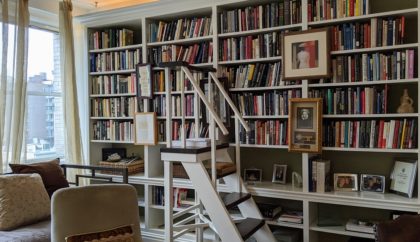
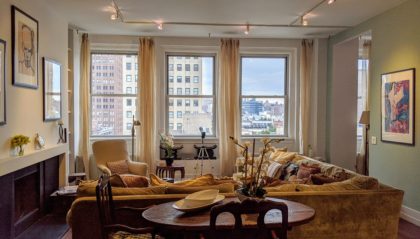
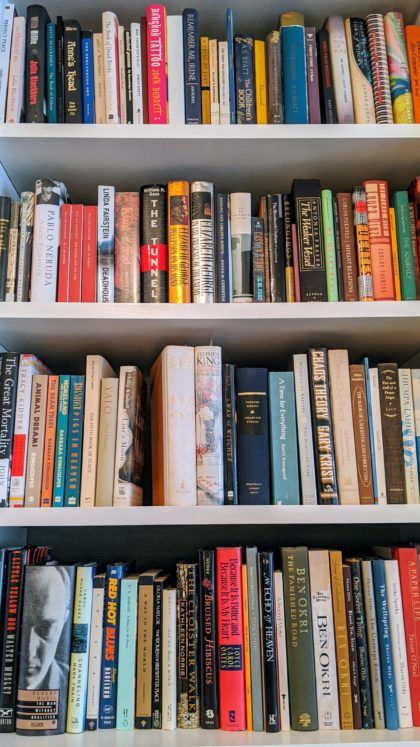
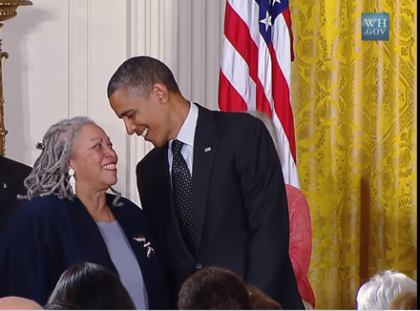
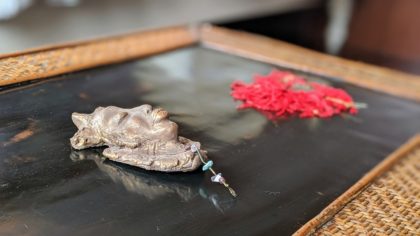
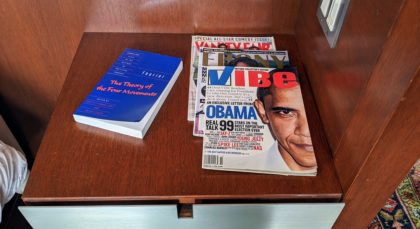
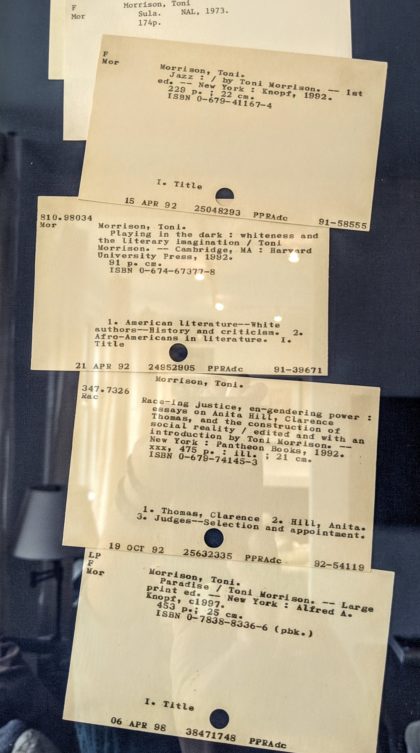
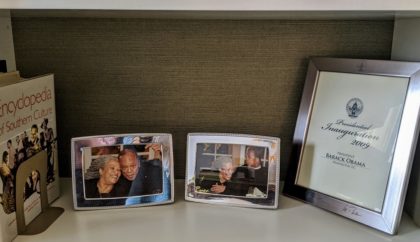






Oh wow. This is a gem and a half to read and see this morning. Thank you for this special piece.
Thanks! It really was a thrill.
Thank you for showcasing this American Legend. You can tell Ms. Morrison was a person who knew herself as the apartment feels so warm, stylish, elegant and personal without that decorator’s “look” (even if one was hired, she obscured it so well).
Thank you for this. Nourishing and inspiring. Re-invokes when the neighborhood was full of strongly individualistic artists, not just financiers.
Fantastic piece, thank you.
May the wonderful history and surroundings provide inspiration to the future owners.
Great read and great piece of writing
chamberspottery@aol.com